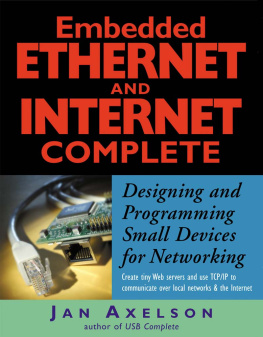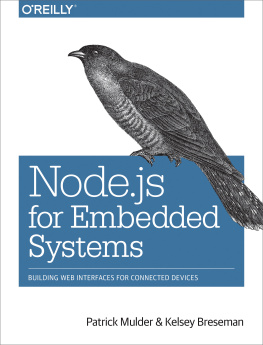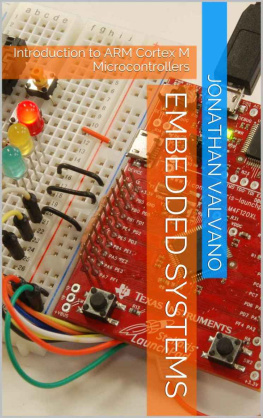John Catsoulis - Designing Embedded Hardware
Here you can read online John Catsoulis - Designing Embedded Hardware full text of the book (entire story) in english for free. Download pdf and epub, get meaning, cover and reviews about this ebook. year: 2005, publisher: OReilly Media, genre: Computer. Description of the work, (preface) as well as reviews are available. Best literature library LitArk.com created for fans of good reading and offers a wide selection of genres:
Romance novel
Science fiction
Adventure
Detective
Science
History
Home and family
Prose
Art
Politics
Computer
Non-fiction
Religion
Business
Children
Humor
Choose a favorite category and find really read worthwhile books. Enjoy immersion in the world of imagination, feel the emotions of the characters or learn something new for yourself, make an fascinating discovery.

- Book:Designing Embedded Hardware
- Author:
- Publisher:OReilly Media
- Genre:
- Year:2005
- Rating:5 / 5
- Favourites:Add to favourites
- Your mark:
Designing Embedded Hardware: summary, description and annotation
We offer to read an annotation, description, summary or preface (depends on what the author of the book "Designing Embedded Hardware" wrote himself). If you haven't found the necessary information about the book — write in the comments, we will try to find it.
Embedded computer systems literally surround us: theyre in our cell phones, PDAs, cars, TVs, refrigerators, heating systems, and more. In fact, embedded systems are one of the most rapidly growing segments of the computer industry today.
Along with the growing list of devices for which embedded computer systems are appropriate, interest is growing among programmers, hobbyists, and engineers of all types in how to design and build devices of their own. Furthermore, the knowledge offered by this book into the fundamentals of these computer systems can benefit anyone who has to evaluate and apply the systems.
The second edition of Designing Embedded Hardware has been updated to include information on the latest generation of processors and microcontrollers, including the new MAXQ processor. If youre new to this and dont know what a MAXQ is, dont worry--the book spells out the basics of embedded design for beginners while providing material useful for advanced systems designers.
Designing Embedded Hardware steers a course between those books dedicated to writing code for particular microprocessors, and those that stress the philosophy of embedded system design without providing any practical information. Having designed 40 embedded computer systems of his own, author John Catsoulis brings a wealth of real-world experience to show readers how to design and create entirely new embedded devices and computerized gadgets, as well as how to customize and extend off-the-shelf systems.
Loaded with real examples, this book also provides a roadmap to the pitfalls and traps to avoid. Designing Embedded Hardware includes:
- The theory and practice of embedded systems
- Understanding schematics and data sheets
- Powering an embedded system
- Producing and debugging an embedded system
- Processors such as the PIC, Atmel AVR, and Motorola 68000-series
- Digital Signal Processing (DSP) architectures
- Protocols (SPI and I2C) used to add peripherals
- RS-232C, RS-422, infrared communication, and USB
- CAN and Ethernet networking
- Pulse Width Monitoring and motor control
John Catsoulis: author's other books
Who wrote Designing Embedded Hardware? Find out the surname, the name of the author of the book and a list of all author's works by series.








 (active low)
(active low)